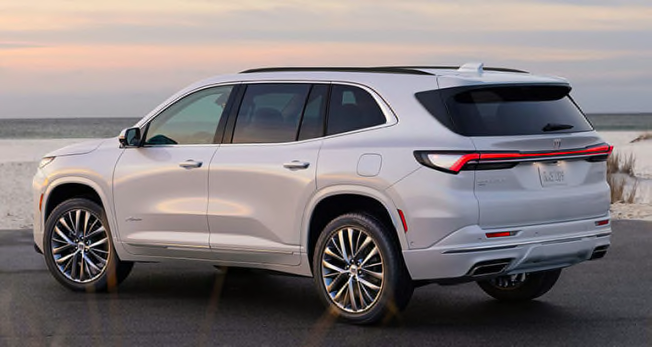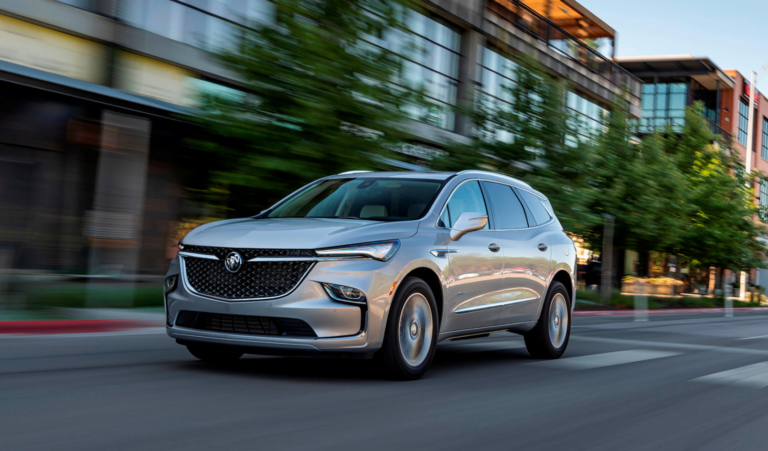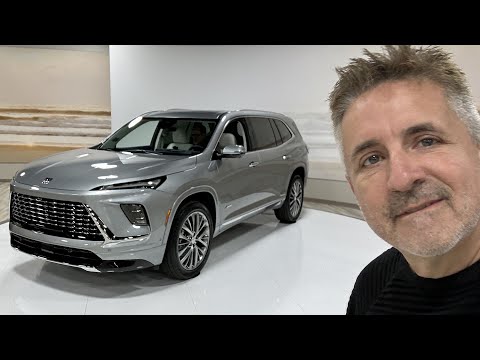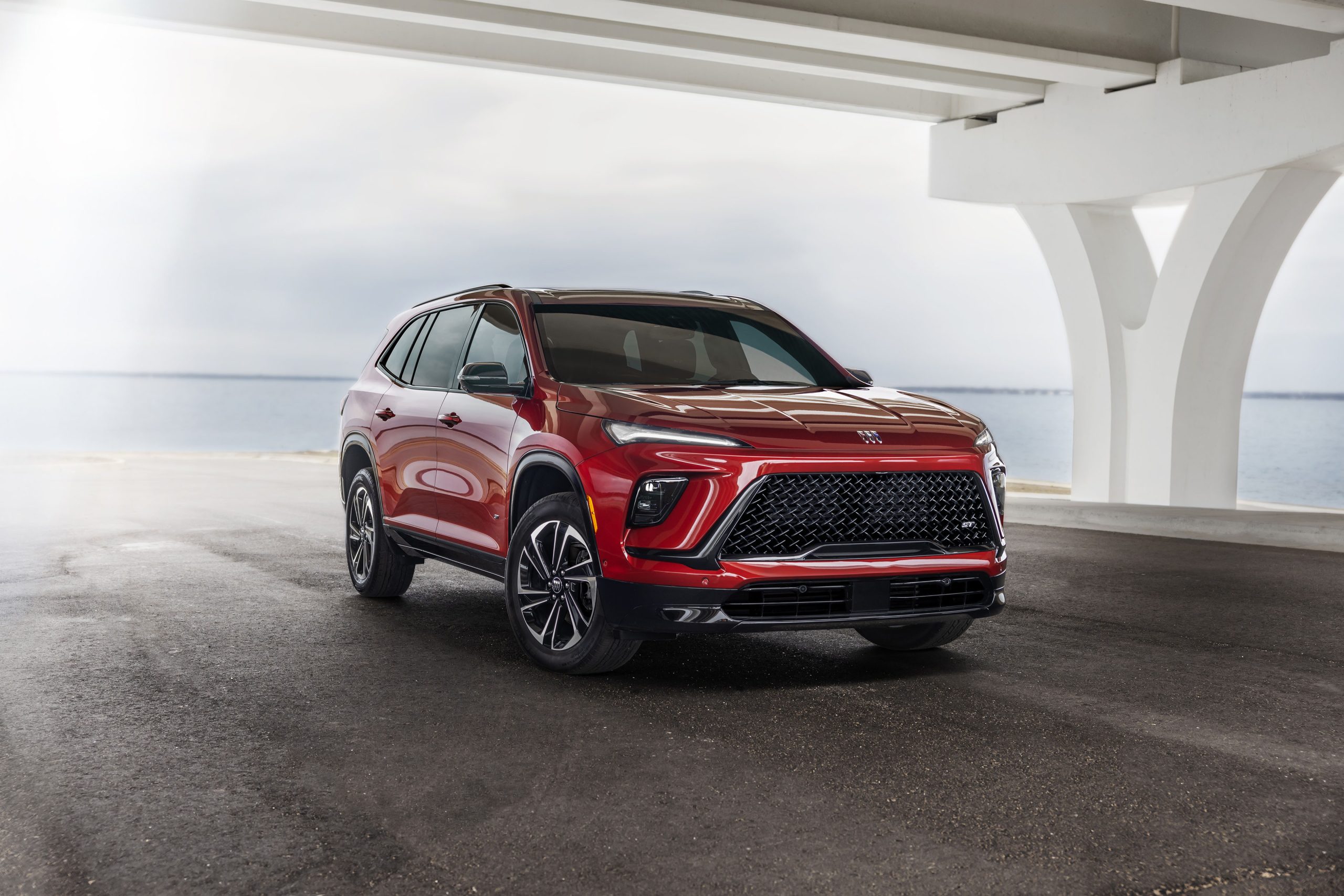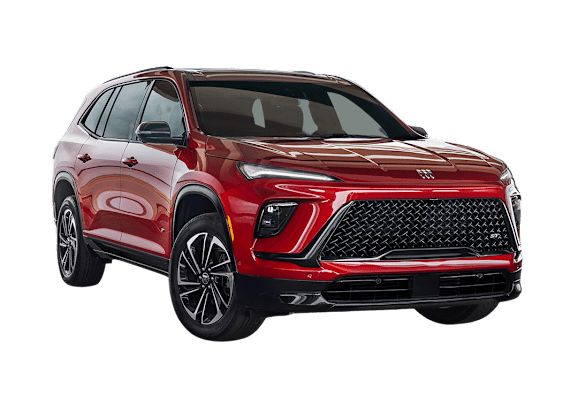2025 Buick Enclave: Consumer Reports Weighs In
The 2025 Buick Enclave, a mid-size three-row SUV, has arrived with a refresh that aims to solidify its position in a competitive market. Consumer Reports, known for its rigorous testing and unbiased assessments, has put the Enclave through its paces, providing valuable insights for potential buyers.
Overall Impression:
The 2025 Enclave, while not a revolutionary leap forward, presents a compelling package for families and individuals seeking a comfortable and well-equipped SUV. Its refined driving experience, spacious interior, and advanced safety features make it a strong contender in its class. However, some areas, like fuel economy and handling, fall short of the best in the segment.
Performance and Fuel Economy:
The Enclave is powered by a 3.6-liter V6 engine producing 310 horsepower and 266 lb-ft of torque, mated to a nine-speed automatic transmission. This setup delivers adequate power for everyday driving and highway merging, but the Enclave struggles to feel truly spirited.
Consumer Reports found the engine to be relatively smooth and quiet, but acceleration is not particularly brisk. The nine-speed automatic transmission, while generally smooth, can exhibit occasional hesitation during low-speed maneuvers.
Fuel economy, a key concern for many buyers, remains a weak point for the Enclave. It achieves a combined fuel efficiency of 21 mpg, falling behind several rivals. While this isn’t a dealbreaker for all, buyers focused on fuel economy might find more efficient options elsewhere.
Ride and Handling:
The Enclave prioritizes comfort over sportiness, offering a smooth and compliant ride. Its suspension effectively absorbs bumps and road imperfections, making it a relaxing vehicle for long journeys. However, this comfort comes at the expense of handling agility.
The Enclave leans noticeably in corners, and steering feels somewhat vague and lacking in feedback. While it’s perfectly capable for everyday driving, the Enclave won’t inspire confidence on twisty roads.
Interior and Cargo Space:
The 2025 Enclave’s interior is a highlight, offering a spacious and well-appointed cabin. The front seats are comfortable and supportive, providing ample legroom and headroom. The second row also boasts generous legroom and is easy to access, while the third row is best suited for children or occasional adult passengers.
Cargo space is generous, with 23.7 cubic feet behind the third row, 58.1 cubic feet behind the second row, and 109.1 cubic feet with all seats folded down. This ample cargo capacity makes the Enclave a practical choice for families or those who frequently transport bulky items.
Material quality throughout the cabin is generally good, with soft-touch surfaces and tasteful trim accents. However, some hard plastics are present in lower areas, which could be a minor point of contention for discerning buyers.
Technology and Infotainment:
The Enclave boasts a modern infotainment system with an 8-inch touchscreen. While the system is responsive and intuitive, the graphics could be sharper and more modern. Apple CarPlay and Android Auto are standard, making it easy to integrate smartphones for navigation, music, and calls.
A suite of advanced safety features is available, including automatic emergency braking, lane departure warning, blind spot monitoring, and rear cross-traffic alert. These features contribute to the Enclave’s overall safety rating, which is a key selling point for many buyers.
Reliability and Ownership Costs:
Consumer Reports has yet to rate the 2025 Enclave’s reliability, as it is a new model year. However, the previous generation Enclave has a solid track record for reliability, and the 2025 model appears to carry over many of its components.
Ownership costs are expected to be in line with other mid-size SUVs, with average maintenance costs and a reasonable depreciation rate.
Consumer Reports’ Verdict:
The 2025 Buick Enclave is a comfortable and spacious SUV that offers a refined driving experience and a well-equipped interior. Its generous cargo capacity and advanced safety features make it a practical choice for families and individuals seeking a reliable and comfortable vehicle.
However, the Enclave’s fuel economy and handling are not class-leading, and some of its interior materials could be more premium.
In-Depth Analysis:
Strengths:
- Spacious and Comfortable Interior: The Enclave’s cabin is a standout feature, offering ample room for passengers and cargo. The front seats are comfortable and supportive, and the second row provides generous legroom.
- Smooth Ride: The Enclave’s suspension is tuned for comfort, effectively absorbing bumps and road imperfections, making it a relaxing vehicle for long journeys.
- Advanced Safety Features: The Enclave comes standard with a suite of advanced safety features, including automatic emergency braking, lane departure warning, and blind spot monitoring, contributing to its strong safety rating.
- Generous Cargo Space: The Enclave offers ample cargo capacity, with 23.7 cubic feet behind the third row, 58.1 cubic feet behind the second row, and 109.1 cubic feet with all seats folded down, making it a practical choice for families and those who frequently transport bulky items.
- Good Interior Quality: The Enclave’s interior features a mix of soft-touch surfaces and tasteful trim accents, creating a pleasant and upscale ambiance.
Weaknesses:
- Fuel Economy: The Enclave’s fuel economy is a significant drawback, with a combined rating of 21 mpg, falling behind many rivals. This could be a dealbreaker for buyers focused on fuel efficiency.
- Handling: While comfortable, the Enclave’s handling is not particularly sharp. It leans noticeably in corners, and steering feels somewhat vague and lacking in feedback.
- Average Performance: The Enclave’s 3.6-liter V6 engine provides adequate power for everyday driving, but it lacks the spirited acceleration found in some competitors.
- Infotainment System: While functional, the Enclave’s infotainment system could benefit from sharper graphics and a more modern design.
- Some Hard Plastics: Despite the overall good interior quality, some hard plastics are present in lower areas, which could be a minor point of contention for discerning buyers.
Comparison to Competitors:
The 2025 Buick Enclave faces stiff competition from other mid-size three-row SUVs like the Honda Pilot, Toyota Highlander, and Ford Explorer.
The Honda Pilot offers slightly better fuel economy, more engaging handling, and a more refined interior. The Toyota Highlander is known for its reliability and resale value, while the Ford Explorer boasts a more powerful engine and a more rugged design.
Conclusion:
The 2025 Buick Enclave is a solid choice for buyers seeking a comfortable and spacious mid-size SUV with a well-equipped interior and advanced safety features. However, its fuel economy and handling fall short of some competitors, and its interior materials could be more premium.
Ultimately, the Enclave’s appeal rests on its combination of comfort, practicality, and value. If these factors are priorities, the Enclave is worth considering. However, buyers seeking a more fuel-efficient, sporty, or luxurious option might find better choices elsewhere.
Consumer Reports’ Recommendations:
- Consider the Honda Pilot for better fuel economy and handling.
- Explore the Toyota Highlander for its renowned reliability and resale value.
- Evaluate the Ford Explorer for its powerful engine and rugged design.
Additional Considerations:
- Trim Levels: The Enclave is available in multiple trim levels, offering different features and amenities. Research the various trim levels to find the best fit for your needs and budget.
- Used Enclaves: If you’re on a tighter budget, consider a used Enclave. The previous generation Enclave has a solid reputation for reliability and can offer significant savings.
- Test Drive: Always test drive any vehicle before making a purchase. This will give you a firsthand feel for the Enclave’s performance, handling, and interior comfort.
Note: This article is based on available information about the 2025 Buick Enclave and Consumer Reports’ typical assessment methods. It is not a substitute for professional advice or independent research.
